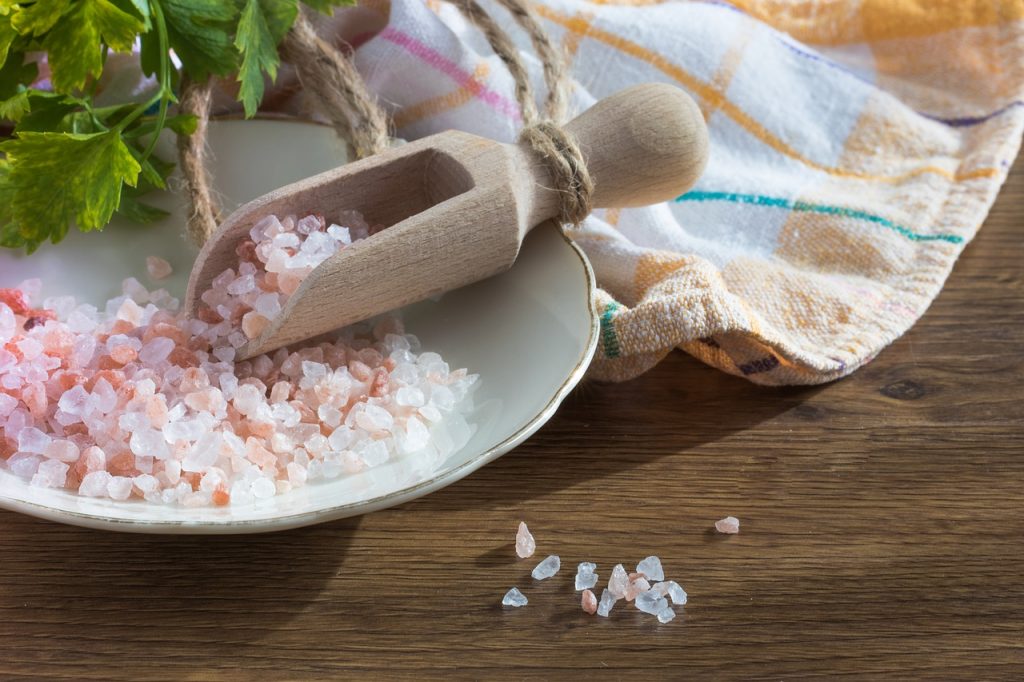Salt is a topic I often discuss in clinic, as there are many different salts on the market, and conflicting ideas around safe consumption levels.
Firstly, it is important to remember there is a world of difference between table salt (the regular salt found on supermarket shelves, and added to most convenience foods) and the natural salts found in fruits and vegetables, and more ‘natural’ salts such as Celtic & Himalayan sea salts.
Salt is an essential mineral, and supports the nervous system, cellular communication, regulation of blood pressure and hydration. ‘Wherever salt goes, water follows’ is a phrase I commonly use to explain why we need some salt to allow water to be transported across the cell membrane and inside of our cells. Without that, drinking water, however much, will not hydrate us, and can possibly put pressure on the kidneys and create fluid retention in some cases.

Eating good amounts of naturally occurring salt in fruits and veggies is important, as they also contain other electrolytes and minerals such as potassium and magnesium, and these minerals all work in synergy together.
In terms of salts to add to foods, commonly known types are Table, Himalayan and Celtic salt, the differences between these being :
TABLE – around 97% sodium chloride, made by refining sea salt, and found in many convenience foods. Contains chemicals and anti-caking compounds, and contributes to elevated blood pressure when used in excessive amounts.
CELTIC SEA SALT – salt extracted from sites in UK, Iceland, and USA. Process is achieved by boiling sea water until crystallized to produce flakes. Modern day techniques mean often an aluminium container is used rather than a traditional clay pot, which potentially creates other issues such as risk of heavy metal overload. Considered the most absorbable form of salt to include regularly.
HIMALAYAN – naturally occurring, mined in Pakistan rather than Himalayas, derived from ancient sea or lake salts. Mineral composition varies due to a number of sites for mining, but contains a broad range of minerals including sodium, potassium, magnesium and iodine.
In summary, it is best to use a naturally occurring salt such as Celtic or Himalayan, in moderation, on a regular basis to improve overall health. Children should be exposed to only small amounts of salt, as they should obtain what they need from their food. This also goes for the mineral iodine, which is a common deficiency throughout the world. Iodine rich foods such as fish, seafood, animal products including dairy, seaweeds and eggs provide minerals and iodine in the diet (as does good quality salt). Not forgetting other ways to add nutrients, minerals and flavour to food, through the use of fresh and dried herbs and spices on a regular basis.
Other ways to get the benefits of salt would be to bathe in it – mixing 2 tbspns each of epsom salts, and soaking for 20 minutes means the body absorbs the nutrients transdermally. Alternatively using salt in warm water as a mouth wash (keep in the mouth for at least 30 seconds) can support a healthy pH in the mouth, and even remineralise the teeth.
Finally we can benefit from the cleaning and ionising effects of Himalayan salt lamps in our home or work space – these are readily available to buy and should be left on constantly to receive the benefits and prevent them from ‘melting’ in the Queensland humidity.